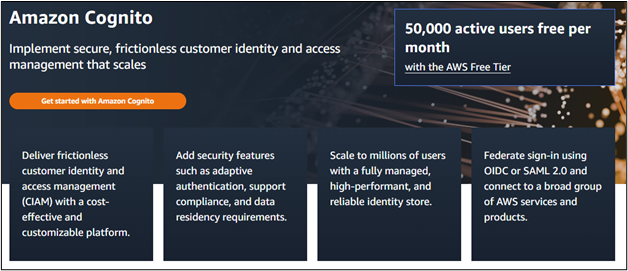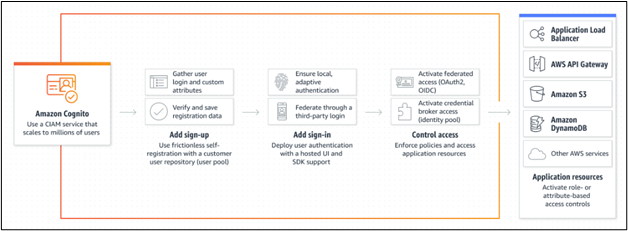This guide will explain AWS SSO and Cognito services with the difference between them.
What is AWS SSO?
Amazon Single Sign-On (SSO) is the ability to centrally manage all identities, like users and groups, to allow those identities to access any kind of enterprise application. It allows the user to sign in once to access the application, and after that, the user can access it directly without having to provide credentials again.

Concepts of SSO
Some of the most important concepts of AWS SSO are mentioned below:
Workforce Identities: It stores all the data of the identities centrally and how much access each identity gets is available.
Multi-Account Permissions: The service offers the user to create multiple accounts with different credentials to get access to the application.
Application Assignments: It provides a centralized space where the user can access all the cloud and on-premise applications:
What is AWS Cognito?
Setting up the security credentials is at the core of every application; it can take ages to make it completely secure with complex options. AWS Cognito provides a hands-off customizable, highly secure, and scalable user management service. The user can sign in directly by providing a username and password or using a third-party authentication:
Concepts of Cognito
Some of the main concepts of Cognito are explained below:
User Management: AWS Cognito manages all the users on the web or mobile application and their identities.
Authentication: It can be used for authenticating users through an external identity provider using Google, Facebook, etc.
Synchronization: It also allows the synchronization of all the identities available on the application:
SSO vs Cognito
AWS Single Sign-On offers the user to sign in once and then directly access the account without providing the sign-in credentials. AWS Cognito is used to create different accounts using public account providers like Amazon, Google, Facebook, etc., and also unauthorized accounts, which are known as guests.
Conclusion
To sum up, the Cognito service is used to manage and authenticate the identities created on the application, whereas the SSO is used to identify the user once and let it have access after that. Cognito is there to validate the access request and allow only the verified users. However, if the account is signed in one, then the user can have access without further verification.



